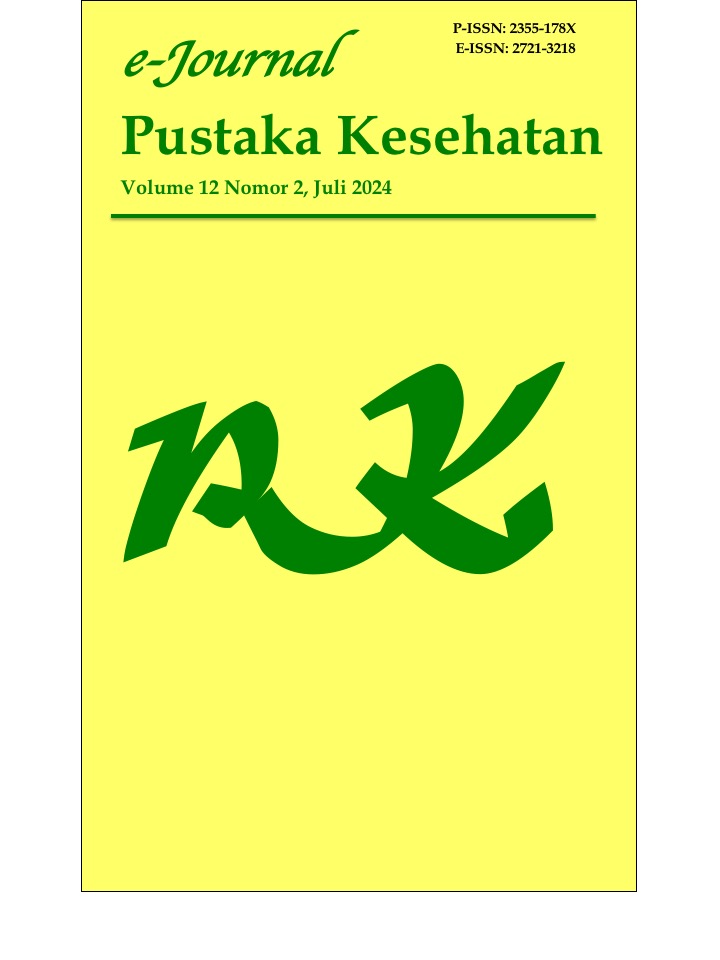Optimasi Komposisi Hidroksipropil Metilselulosa dan Etil Selulosa dalam Preparasi Hollow Microspheres Kaptopril
DOI:
https://doi.org/10.19184/pk.v12i2.11911Keywords:
hollow microspheres, optimization, captopril, HPMC, ECAbstract
Hypertension is a condition while blood pressure is increasing. The normal value of blood pressure is <120/80 mmHg. One of the drugs used to reduce blood pressure is captopril. Captopril has a short half-time, so it requires repeated administration that allows fluctuations. To solve this shortcoming, an approach was carried out using a controlled delivery system, hollow microspheres. The purpose of this research is to optimize and determine the amount of Hydroxypropyl Methylcellulose (HPMC) and Ethyl Cellulose (EC) polymers that can produce the optimum formula. Optimization is done using the factorial design method. The response that will be observed in this research is the value of entrapment efficiency, buoyancy, and particle size. The optimum formula was obtained in the combination of HPMC and EC amounts in captopril hollow microspheres are 75 mg HPMC and 200 mg EC.
Downloads
References
[2] Sahu S, Chourasia A, Toppo A, Asati A. Formulation and evaluation of captropril microspheres by ionic gelation technique. International Journal of Pharmacy and Life Sciences. 2012. 3(1):1377– 1379.
[3] Ashok KS, Prashant KP, Dilip GD. Biopharmaceutical classification sytem and biowaiver. International Research Journal of Pharmacy. 2011. 2(5):66–71.
[4] Dipiro JT, Schwinghammer TL, Wells BG, Dipiro CV. Pharmacotherapy Handbook, Tenth Edition. Edisi 10. United States of America: McGraw- Hill Education. 2017.
[5] Gandhi S, Bhandari A, Jani GK, Upadhyay N, Pathak R. Optimization of floating microspheres of captopril using full factorial design. Asian Journal of Biomedical and Pharmaceutical Sciences. 2012. 2(15):69–94.
[6] Nayak AK, Maji R, Das B. Gastroretentive drug delivery systems: a review. Asian Journal of Pharmaceutical and Clinical Research. 2010. 3(1):2–10.
[7] Akash H, Sajid M, Iqbal F, Raza M. Characterization of ethylcellulose and hydroxypropyl methylcellulose microspheres for controlled release of flurbiprofen. Journal of Pharmaceutics & Drug Delivery Research. 2013. 2(1):1–10.
[8] Ganesan P, Soundararajan R, Shanmugam U. Development, characterization and solubility enhancement of comparative dissolution study of second generation of solid dispersions and microspheres for poorly water soluble drug. Asian Journal of Pharmaceutical Sciences. 2015. 10(5):433–441
[9] Kapoor D, Patel R. Formulation, optimization and evaluation of floating microspheres of captopril. Asian Journal of Biomedical and Pharmaceutical Sciences. 2012. 2(9):1-10.
[10] Yadav A, Jain DK. Formulation and characterization of sustained release floating microballoons of metformin. Tropical Journal of Pharmaceutical Research. 2012. 11(4):561–568.
[11] Jagtap Y, Bhujbal R, Ranade A, Ranpise N. Effect of various polymers concentrations on physicochemical properties of floating microspheres. India Journal of Pharmaceutical Sciences. 2012. 74(6):512-520.
[12] Raza SN, Khan NA. Various formulation varoables effecting floatation behabiour of single unit gastroretentive capsules of ofloxacin. International Journal of Pharmacy and Pharmaceutical Sciences. 2017. 9(1):213–217.
[13] Garud N, Garud A. Preparation and in-vitro evaluation of metformin microspheres using non-aqueous solvent. Tropical Journal of Pharmaceutical Research. 2012. 11(4):577-583.
Downloads
Published
Issue
Section
License
e-Journal Pustaka Kesehatan has CC-BY-SA or an equivalent license as the optimal license for the publication, distribution, use, and reuse of scholarly work. Authors who publish with this journal retain copyright and grant the journal right of first publication with the work simultaneously licensed under a Creative Commons Attribution-ShareAlike 4.0 International License that allows others to share the work with an acknowledgment of the work's authorship and initial publication in this journal.



